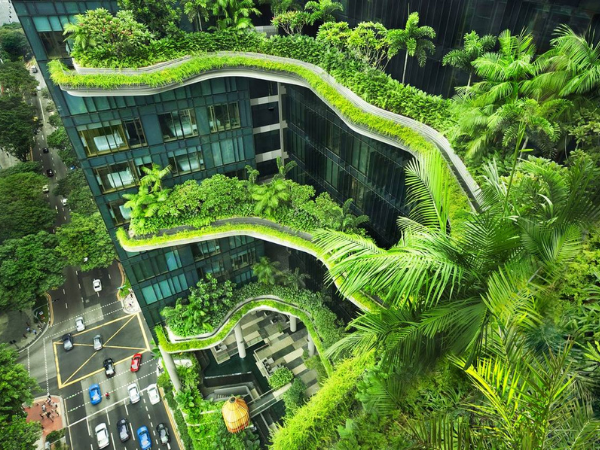
Eco-Innovations: Green Building Technologies Transforming Tomorrow
Green building technologies stand at the forefront of architectural evolution, ushering in a new era of sustainable construction practices. This article explores the myriad innovations in green building, highlighting their environmental impact, energy efficiency, and the transformative role they play in shaping the future of urban development.
Sustainable Materials and Construction Practices
At the core of green building technologies are sustainable materials and construction practices. From recycled steel and reclaimed wood to eco-friendly insulation materials, the emphasis is on reducing the environmental footprint of construction. Additionally, innovative construction methods such as modular building and 3D printing contribute to efficiency and resource conservation.
Energy-Efficient Design and Renewable Energy Integration
Green buildings prioritize energy-efficient design, leveraging natural light, ventilation, and insulation to reduce the need for artificial heating and cooling. Integrating renewable energy sources, such as solar panels and wind turbines, further enhances sustainability. These energy-efficient measures not only lower operational costs but also contribute to a greener and cleaner urban landscape.
Smart Building Systems and Automation
The integration of smart building systems and automation is a hallmark of green building technologies. These systems utilize sensors and controls to optimize energy usage, lighting, and temperature. Smart thermostats, occupancy sensors, and automated shading systems work in tandem to create an intelligent and responsive building environment, enhancing comfort while conserving energy.
Water Conservation and Management
Green buildings prioritize water conservation through innovative technologies. Low-flow fixtures, rainwater harvesting systems, and greywater recycling contribute to efficient water usage. Water management strategies extend beyond the building itself, addressing landscaping practices and stormwater management to minimize the impact on local ecosystems.
Green Roofs and Vertical Gardens
Green roofs and vertical gardens are aesthetic and functional additions to green building designs. Green roofs, covered with vegetation, provide insulation, reduce stormwater runoff, and mitigate the urban heat island effect. Vertical gardens, both decorative and functional, enhance air quality, promote biodiversity, and contribute to the overall well-being of building occupants.
Waste Reduction and Circular Economy Practices
Green building technologies embrace waste reduction and circular economy practices. Construction waste is minimized through careful material selection, recycling, and repurposing. Additionally, the principles of the circular economy encourage the design of buildings with longevity in mind, facilitating future adaptability and reducing the need for demolition and reconstruction.
Certifications and Standards for Green Buildings
Certifications and standards play a crucial role in the green building landscape. LEED (Leadership in Energy and Environmental Design) and other similar certifications set benchmarks for sustainable building practices. Compliance with these standards ensures that green buildings meet specific criteria for energy efficiency, water conservation, indoor air quality, and overall environmental performance.
Biophilic Design and Connection to Nature
Biophilic design is an integral aspect of green building, fostering a connection to nature within urban environments. Incorporating natural elements, such as plants, water features, and natural materials, enhances the well-being of occupants. Biophilic design principles acknowledge the innate human need for connection with the natural world, promoting productivity and mental well-being.
Cost Benefits and Return on Investment
Contrary to misconceptions, green building technologies often result in cost benefits and a positive return on investment. While initial construction costs may be slightly higher, the long-term savings in energy, water, and maintenance expenses outweigh the upfront investment. Green buildings also command higher property values and rental premiums, making them financially attractive for investors.
Community Impact and Sustainable Urban Development
Beyond individual buildings, the adoption of green building technologies contributes to sustainable urban development. Communities that prioritize green building practices experience improved air quality, reduced strain on infrastructure, and enhanced overall quality of life. Green buildings become integral components of resilient and environmentally conscious cities.
Explore more about Green building technologies and embark on a journey towards sustainable and eco-friendly urban development.
